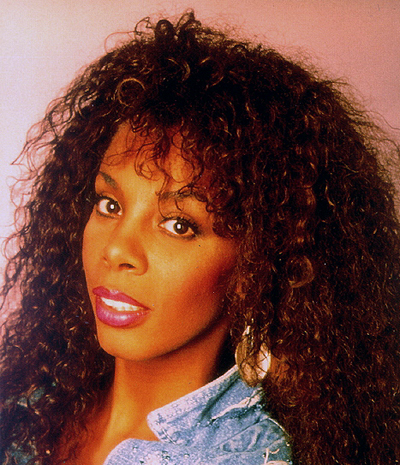|
LaDonna Adrian Gaines was born on December 31, 1948 in Boston (Mass.) but we could say her story began a few years later, when she sang solo for the first time in a church choir. She realized she was singing beautifully and noticed she had brought tears to the eyes of the whole congregation, which included her father. Something clicked within her heart. Unsurpringly, her first musical idol became legendary gospel singer Mahalia Jackson.
Growing up, her love for music was such that she often played hookey to take singing lessons or to visit record stores. Her parents tried to make her behave properly, but music was all that mattered to Donna. At home, with her sisters, she sang like Barbra Streisand, or the Supremes, or Dionne Warwick. Later she joined a Boston psychedelic rock band called THE CROW. In 1967 she went to New York to audition for a part in HAIR, and got a part in the German cast of the show just a few weeks before graduating.
In Germany, after acquiring some experience in the music theatre field (GODSPELL, SHOWBOAT, THE ME THAT NOBODY KNOWS) she got noticed by Giorgio Moroder and Pete Bellotte, a newly formed producer/writer team with whom, in a couple of years' time, she managed to become an international star.
After THE HOSTAGE and LADY OF THE NIGHT, she got her first big hit: LOVE TO LOVE YOU BABY, a highly erotic recording which launched her as the ultimate sexy diva. Donna played the game and sang tracks like TRY ME, COULD IT BE MAGIC and SPRING AFFAIR - hoping the public would also pay attention to her musical gifts. Almost at the same time she divorced from Helmut Sommer, an Austrian actor who had given her her first daughter, in addition to her stage name. Since 1977 she cut a string of recordings which can be easily described as historic, like I FEEL LOVE, universally described as the highest point in the history of disco.
Some critics, probably biased by some of her sexy material, thought Donna didn't posses a great voice: irrefutable proofs of bravura like LAST DANCE and MAC ARTHUR PARK SUITE seemed to arrive to prove them wrong. The official awards arrived too: gold records, platinum records and the first Grammy, for LAST DANCE (a song that let its author Paul Jabara win an Oscar). Donna was crowned "Queen of disco" but was far from being satisfied: she wanted to show she could sing any kind of music, rock & roll included, and she could: HOT STUFF let her win a Grammy in the Best Female Rock Vocal Performance category.
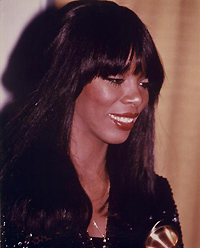 |
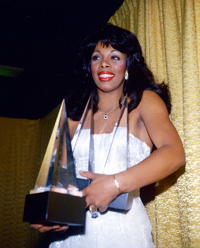 |
Soon the sexy image she had never felt comfortable in wearied her, so Donna decided to start getting rid of it. In 1979 (BAD GIRLS) she aimed at having her talent as a songwriter considered. She recorded a legendary, highly competitive duet with Barbra Streisand (NO MORE TEARS) and held her own. On 16 July 1980 she married again, with Bruce Sudano of the Brooklyn Dreams. In the fall of the same year she released THE WANDERER, a courageous and mature album on which she opened her heart and went also through spiritual themes.
In 1981 she wanted to offer a more personal, free-from-the-trends image of herself, but her record company thought it was a commercial hazard and decided to put an end to the Summer/Moroder/Bellotte association (the shelved double album I'M A RAINBOW got released only in 1996). At this point Donna began her wandering from one great music producer to another (Quincy Jones, Richard Perry, Keith Diamond, and most notably Michael Omartian) succeeding in showing she wasn't the singing puppet with no resources of her own some had thought she was during the first part of her career. Under Omartian's direction she got two Grammys for Best Inspirational Vocal Performance (HE'S A REBEL and FORGIVE ME) and, in 1994, she recorded a stunning Christmas album (CHRISTMAS SPIRIT).
In 1998 a quick reunion with Moroder let her win a Grammy in the Best Dance Recording category - two years later she got nominated again thanks to her electrifying version of Andrea Bocelli's CON TE PARTIRO' (I WILL GO WITH YOU).
In her maturity Donna Summer could afford the luxury to include both the Gershwins and Stock, Aitken & Waterman in her shows, write pop songs in Nashville (her new home, after years spent in Los Angeles) and climb the dance charts with the same ease. During most of the 90's she was quite absent from the recording market, but her voice and style became synonymous with beauty, power and passion: the modern way - her modern way - became a classic.
The new millennium found Donna working on an ambitious musical-theater project, ORDINARY GIRL, and writing an autobiography of the same name (published in October 2003). In May 2008 she came back with CRAYONS, a surprisingly fresh and vital album celebrating all those colors of music - pop, rock, R&B, dance and ballads - that have made her an absolutely unique singer and performer. On 17 May 2012 Donna passed away following a secret battle with lung cancer. In spite of her illness, she was determined to finish her last album...
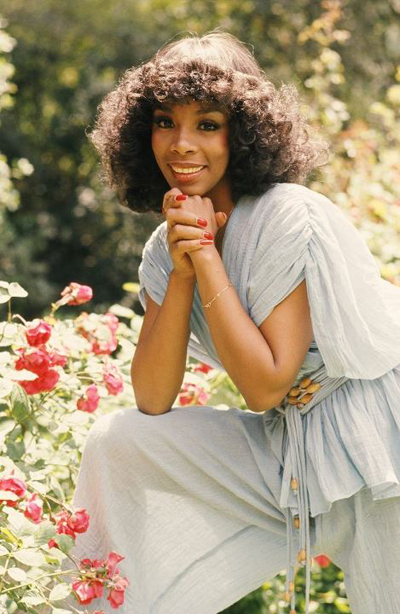
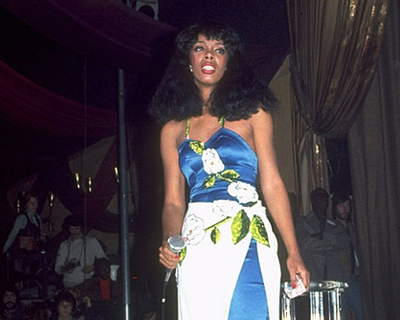
|

